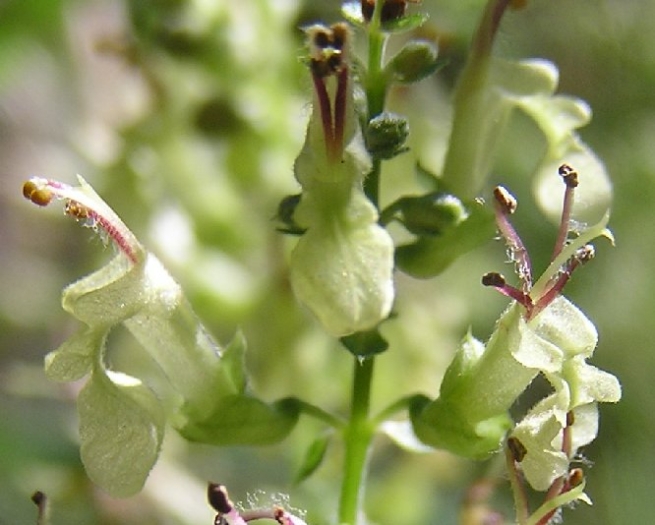Woodland Germander
(Teucrium scorodonia)
Woodland Germander (Teucrium scorodonia)
/
/

Michael Becker
CC BY-SA 3.0


























































Estimated Native Range
Summary
Woodland Germander is valued for its attractive foliage and unique flowers, which add texture and interest to garden settings. It is often used in herb gardens, borders, and as ground cover in cultivated landscapes. This plant is relatively low-maintenance, tolerating a range of soil types and drainage conditions. It prefers full sun but can also grow in part shade. While it is not particularly prone to diseases, it can suffer from root rot in overly wet conditions. Woodland Germander is not known for aggressive roots or significant pest problems, making it a reliable choice for gardeners. It is also appreciated for its aromatic leaves, which have been used historically in herbal medicine.CC BY-SA 4.0
Plant Description
- Plant Type: Subshrub, Herb
- Height: 1-2 feet
- Width: 2-3 feet
- Growth Rate: Moderate
- Flower Color: Yellow, Green
- Flowering Season: Summer
- Leaf Retention: Semi-deciduous
Growth Requirements
- Sun: Full Sun, Part Shade
- Water: Medium
- Drainage: Slow, Medium, Fast
Common Uses
Bee Garden, Bird Garden, Border Plant, Butterfly Garden, Deer Resistant, Drought Tolerant, Fragrant, Hummingbird Garden, Low Maintenance, Potted Plant, Salt Tolerant
Natural Habitat
Native to open woodlands, forest clearings, and scrub areas in Western Europe and Tunisia
Other Names
Common Names: Wood Germander, Woodland Sage, Wood Sage, Klase-Kortlæbe, Salbei-Gamander, Germandrée Scorodine, Germandrée Scorodoine, Firtann, Valse Salie, Engelsk Gamander
Scientific Names: , Teucrium scorodonia, Scorodonia heteromalla, Teucrium sylvestre, Teucrium scorodonia var. crispum, Monochilon cordifolius, Scorodonia scorodonia, Scorodonia scorodonia publ, Scorodonia solitaria, Scorodonia sylvestris
GBIF Accepted Name: Teucrium scorodonia L.